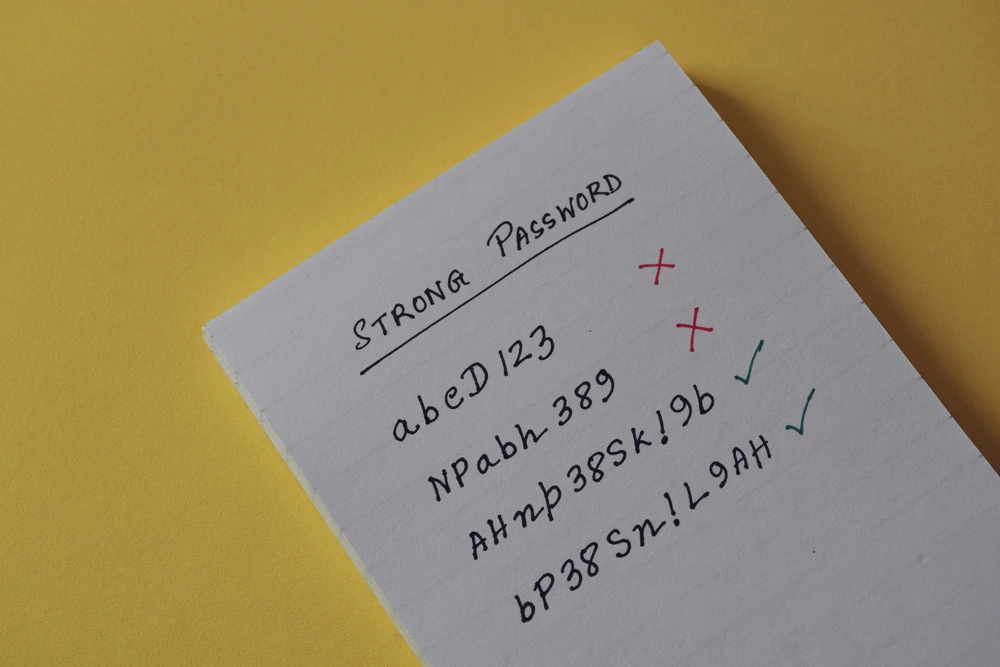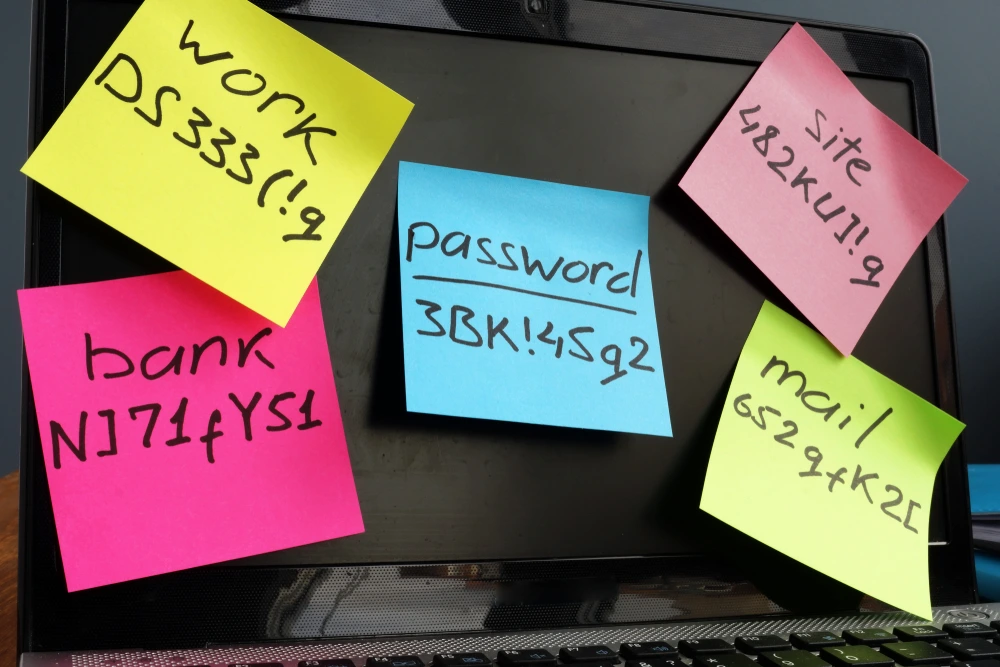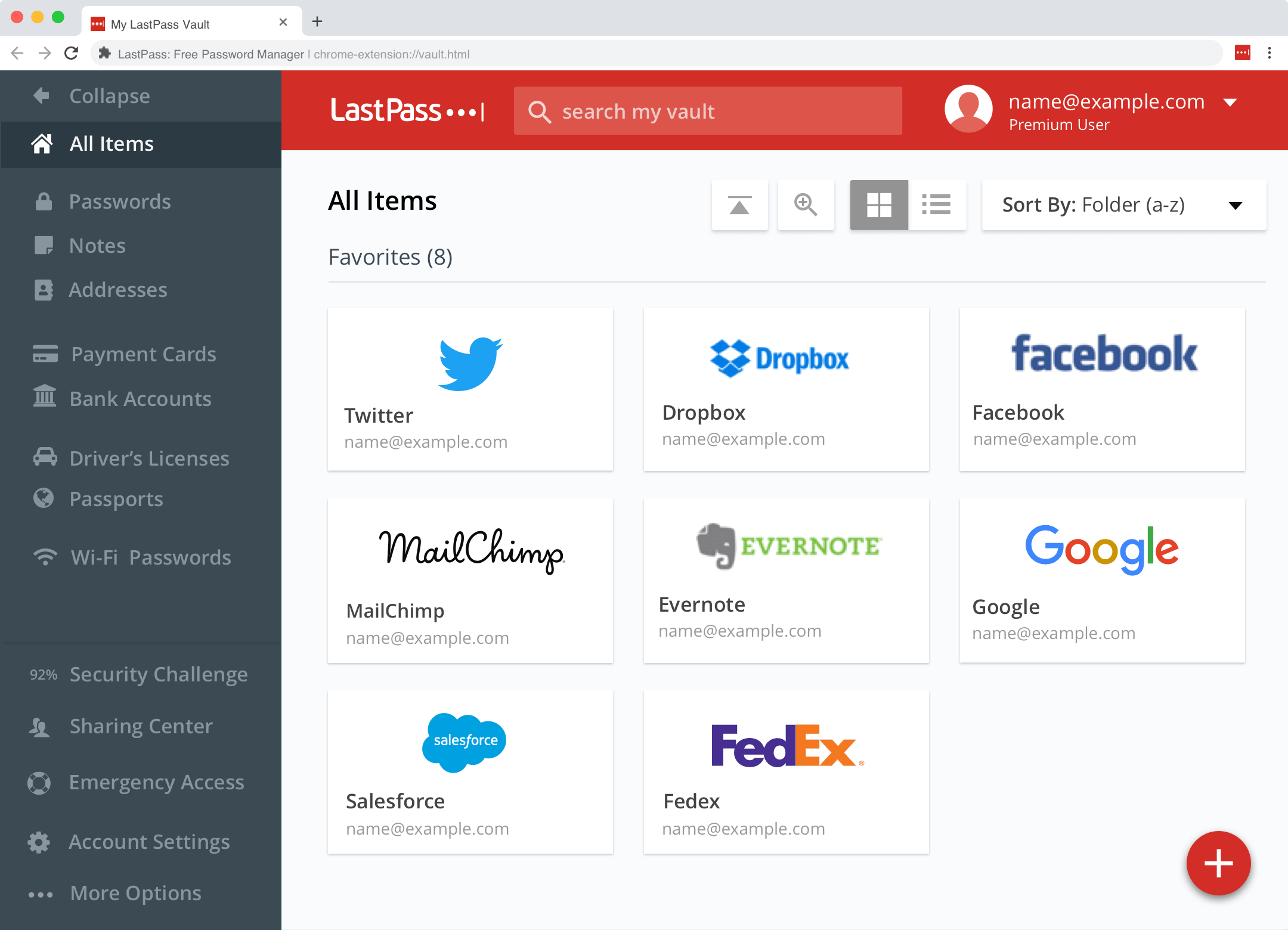In today’s digital age, our online accounts hold a wealth of personal information. From our financial details to our private conversations. It’s easy to see why hackers and cybercriminals would try to force their way in. Constantly trying to gain access to our accounts. One of the most effective ways to protect yourself from these malicious actors is by creating a strong password.
Chances are passwords are the last thing you want to think about. It probably feels like you’re always having to change them and they’re hard to keep track of. But, think about what’s at stake in your accounts.
This article will explore what makes a strong password, and the different types, and provide tips on how to create and manage your passwords effectively.
What makes a strong password
It goes without saying that a strong password is one that is difficult for others to guess or crack. If you think of your password as a lock to your accounts, you want it to be as difficult as possible for someone to break or even force their way into it.
Unfortunately, many people still use weak passwords, such as “password” or “1234”, which can be easily cracked. As annoying as it might be to have a more complicated and complex password, it’s really the only thing keeping your digital information safe.

Another important thing that you should try to avoid is using easily guessable or searchable information. Things such as your name, address, or birth date can be found online or in public databases. This information is often used by hackers during a social engineering attack, where they attempt to gather personal information about you in order to crack your password. For example, if your password is “JohnDoe123”, it’s fairly easy for a hacker to guess that your name is John Doe, and that your password is likely to include your name.
How to make a strong password
Now that you’ve seen a couple of examples of what not to do when it comes to your passwords, it’s time to figure out what you should be doing. Here’s a list of the top four tips you should keep in mind when you’re coming up with your password(s):
- Use variety in your passwords. Use a combination of upper and lower case letters, numbers, and special characters.
- Avoid the obvious. Don’t use easily guessable information.
- Longer is better. Make your password at least 12 characters long.
- Use something unique. Avoid using the same password for multiple accounts.
1. Use variety in your passwords
These days, most accounts will require you to use some variety in your passwords. A mix of uppercase, lowercase, special characters, and numbers always makes it more secure. As an example, if you were using “password” it would be easy for someone to break into your account. However, making a small adjustment so that it was now “P@$$w0rd” makes it exponentially safer and more secure.
2. Avoid the obvious
You never want to use something that’s easily guessable or searchable about yourself. Many people use their name, kids’ and pets’ names, or even their street address as their go-to password. But, if it’s easy for someone to find online, then you can bet a hacker will try some combination of that information to get into your account.
Tip: This is great to keep in mind for security questions, too. If someone can look up your mothers’ maiden name or guess that your favorite color is red, green, or blue – then they’ll be able to reset your password just as easily.
3. Longer is better
While it’s true that statistically speaking, the more characters you have in your password the harder it is to crack. But, there’s a balance or a sweet spot when it comes to this tip. You don’t want to create a password that is so long that it’s difficult to remember. Your password shouldn’t be so secure that it keeps you out of your own accounts.
Many experts suggest having at least 12 characters in your password. You can try combining two random things that you enjoy a lot like “Diamonds” and “Sushi” to create a longer passphrase that is still easy to remember.
4. Use something unique
This is the tip that everyone rolls their eyes at, but it’s mentioned everywhere because it works. You never want to use the same password for multiple accounts. Or, at the very least, use a unique password for your accounts that have more sensitive information.

If you’re using the same password, when one of your accounts is breached, then that means the hackers would now have the password to the rest of your online accounts. Using a unique passphrase or code limits the access someone else has to your data.
Use Strong password generator
Coming up with a unique and secure password every time you create an account is no easy feat. Especially, if you’re like me and you have hundreds of different accounts. Thankfully, there are a lot of apps that can help you with that, you can use password generator or Lastpass password generator. Both of this services can create random strong password that you can use.
How to check how strong is your password
Even if you follow the tips mentioned above, you might still question how strong your password actually is. Well, you’re in luck, because you’re able to check for yourself.
These tools are easy to find with a quick Google search. But, this password strength checker from PasswordMonster works great. And, it gets extra points for telling you how long it would take for a computer to guess your password.
Where to store your passwords safely
Another great tool that can help you use stronger passwords is a password manager. This is especially helpful to make sure you’re using unique ones for each of your accounts. Here also we have a great post where you will find a list of best password managers to use. One of the great examples is LastPass app, it helps you to store all your passwords in one place protected with your master key password.

A password manager is a program that stores your passwords in an encrypted format, making them easy to use and manage. With a password manager, you can create strong, unique passwords for each of your accounts and store them in one secure location. Many of these apps also include features like auto-generated passwords, password strength checkers, and two-factor authentication, which can help to make your passwords even more secure.
How often should you change your passwords?
It used to be common knowledge that you should change your passwords often. In fact, it’s very likely that your company has a password policy that requires you to change your work accounts every certain number of days. But, that’s actually being recommended less frequently now because it makes it harder for people to remember what their current passwords are.
This article from Business Insider goes into more detail about why you shouldn’t change your passwords often and explains when you should change it. Times the article recommends you should change your password include:
- After a data breach.
- When someone unauthorized accesses your account.
- If you’ve logged in on public Wi-Fi.
- After using someone else’s device.
- Haven’t signed into your account in a while.
How to check if your password is compromised
One of the easiest ways to find out if your password has been compromised is to use a website like HaveIBeenPwned.com. You can enter your email address and check if your email and/or password have been part of a data breach. The website’s database is frequently updated with new breaches, so it’s a good idea to check your email and passwords regularly.

Another way to check if your password has been compromised is to use a password manager that has a built-in feature that checks your password against a database of compromised passwords. This way, you can easily check if your password has been compromised without having to go to a different website.
Even operating systems like macOS have features that can tell you if your account has been compromised. All you have to do is open System Preferences and click on Passwords to check.
If you do find out that your password has been compromised, it’s important to change it immediately.
How to keep your passwords safe
It should be fairly obvious but don’t share your password with anyone. Even if it’s a friend or family member. And, if you suspect that your account may have been compromised, change your password immediately and contact the company or organization that manages the account.
Additionally, be careful with phishing attacks or emails asking you to click on a link or enter your information, always double-check if it’s coming from a reputable source, and don’t be afraid to ask for help if you are unsure about something.
In summary, creating a strong password is just the first step in securing your online accounts. By using a combination of the tips outlined in this article, you can ensure that your accounts are as secure as possible, and reduce the risk of them being hacked. With a bit of care and attention, you can take control of your online security and protect your personal information.
